How to get a good harvest of rutabaga: growing and care according to instructions for beginners
Healthy, tasty and easy to grow, rutabaga is rarely seen in garden beds, much less on store shelves. But even 200-300 years ago, this wonderful vegetable was bred everywhere, used as food and fed to livestock.
The area under rutabaga has decreased due to the widespread use of potatoes and other vegetable crops. However, there is now a revival of interest in growing this forgotten root crop. Beginner gardeners are interested in the question of how to properly plant rutabaga and care for it in order to get a good harvest. Step-by-step instructions for growing rutabaga are in our article.
What is rutabaga
Rutabagas belong to the cabbage family and are considered a hybrid of cabbage and turnips.. The shape of the root vegetable is similar to beets, turnips or radishes, but has a different original color from them: the upper part is violet-bronze or gray-green, and the lower part, like the pulp, is light yellow or white.
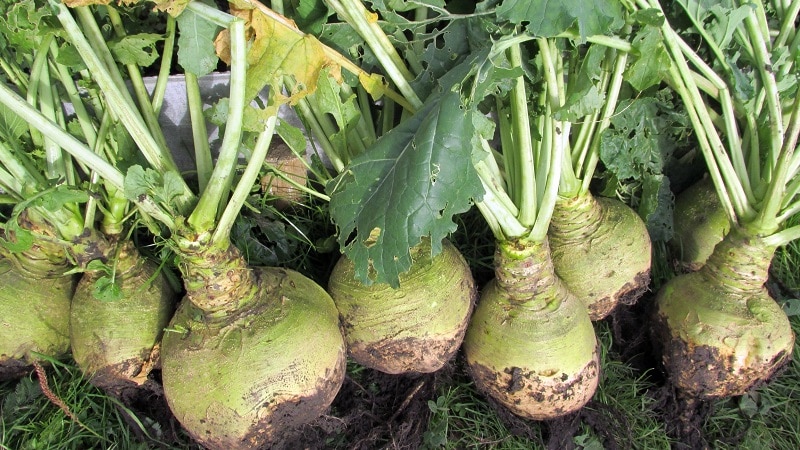
According to many, Rutabaga is tastier than turnips - it does not have a thin aftertaste, and it also stores better and longer. Its pulp contains vitamins, proteins, carbohydrates, fats, pectin, nicotinic acid and mustard oils. It contains iodine, sodium, magnesium, manganese, potassium, calcium, iron and other useful substances in a biologically active form, in which they are better absorbed by the body.
Important! There is more vitamin C in rutabaga than in citrus fruits, and its low calorie content - 100 g contains only 35 kcal - makes it an ideal product for those watching their weight.
Features of its cultivation
Today rutabaga is actively grown in Siberia, the Urals and the Non-Black Earth zone of Russia. In more southern regions, it did not take root due to the characteristics of cultivation and requirements for soil, heat and light.
Rutabaga is unpretentious, cold-resistant and does not require much heat.. The optimal temperature for growing is from +15 to +20°C. She does not like intense heat; high temperatures prevent the development and growth of root crops, and low temperatures, from 0 to +10°C, promote the formation of flower stalks.
Soils are suitable for any composition, but the best harvest of rutabaga will be on loamy, heavy clay or well-cultivated peat soils. Acidic, sandy and gravelly poorly cultivated lands are unsuitable for it.
Rutabaga is moisture-loving and does not tolerate severe drought., prefers moderately moist soil and high air humidity. If overwatered, it becomes watery.
Depending on the variety, it relates differently to the length of daylight hours. But it was found that in sunny weather, rutabaga grows, ripens and accumulates vitamins better.
Interesting things about culture:
What is rutabaga, how does it grow and how is it useful?
What is the difference between rutabaga and turnip and how to tell them apart
How to use rutabaga in cooking, cosmetology and traditional medicine
Growing season
After sowing, it takes about a week to a week and a half before the first shoots, and after 20-30 days the first thickening of root crops begins. The full growing season of rutabaga is 3-4 months. At day 90, some varieties of root vegetables weigh more than 800 g.The increase in their mass can continue further, but the flesh becomes coarser, although it remains juicy.
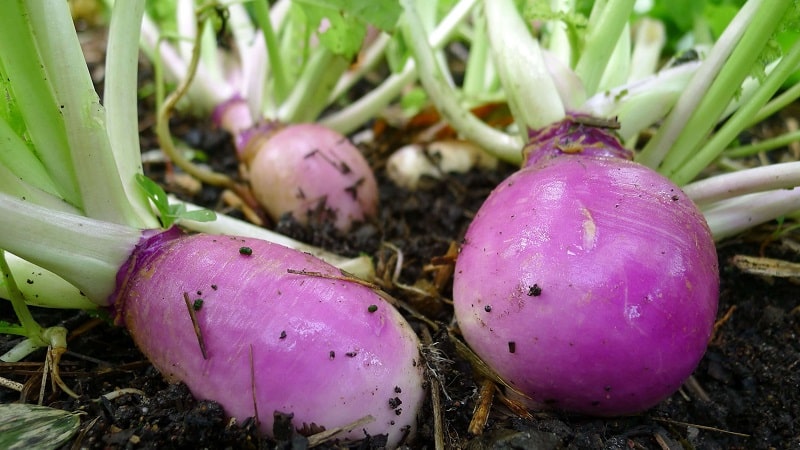
How to grow rutabaga
The technology for growing rutabaga is simple, but to guarantee good results, it is useful for novice gardeners to familiarize themselves with proven methods.
When to plant
Rutabagas are planted in spring for seedlings or before winter.. If planted in late autumn, it will sprout vigorously in the spring and the harvest will ripen several weeks earlier. Rutabaga is sown when the ground has already frozen a few centimeters.
The seeds are placed in holes slightly less than 3 cm deep, which are arranged in a row. Leave 2-3 cm between holes, about 10 cm between rows. Then sprinkle with a layer of compost, and if winters in the region are frosty, cover with spruce branches. The shelter is removed in early spring, as soon as the snow melts.
Preparation of planting material
Before boarding It is recommended to soak the seeds for several hours in warm water with potassium permanganate or in garlic solution. This is done for disinfection. Then the seeds are washed, dried and planted.
Sowing seedlings and caring for them
In the spring, starting from the second half of March, rutabaga is sown for seedlings. The seeds are planted in boxes with a moistened substrate, deepening them by 1-1.5 cm, at a distance of about 3 cm from each other, leaving at least 6 cm between the rows. Cover the boxes with film and maintain the temperature at about 17-18°C.
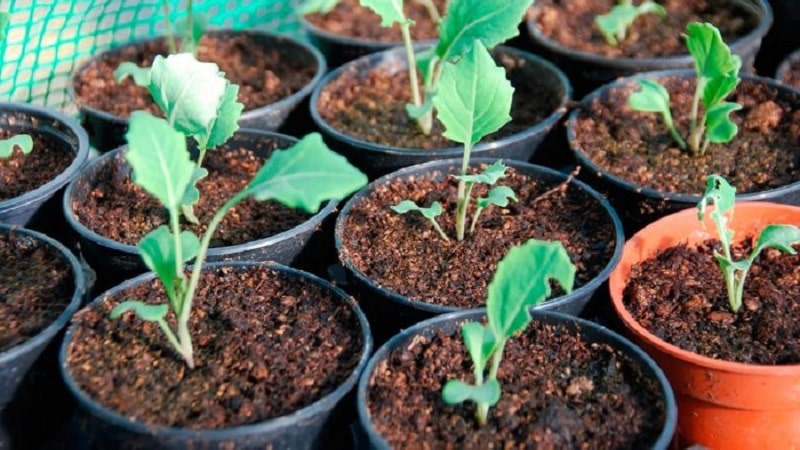
Shoots will appear in 6-10 days and the film can be removed and the boxes put away in a cooler room. It is important to maintain a temperature that is comfortable for seedling growth - about +15°C. Further care consists of timely watering, loosening and thinning.
Important! Before planting in open ground, rutabaga seedlings are hardened off for 1.5-2 weeks.Boxes with plants are taken out into the open air for several hours, increasing the time spent outside every day.
Transplantation into open ground
After a month and a half, as soon as the seedlings have 4-5 true leaves, the rutabaga is transplanted into open ground. Typically, the planting date is planned for mid-May, when the threat of return frosts has passed.
Planted in the place where they grew before potatoes, eggplant, pumpkin or cucumbers. The beds for planting are prepared in the fall, dug up in advance and fertilizer is applied.
For 1 sq. m it is recommended to make:
- 4 kg of manure;
- 15 g urea;
- 20 g potassium salt;
- 35 g superphosphate.
If the earth is acidic, add lime until neutral.
Planting pattern 20 x 50 or 35 x 40 cm. This distance between seedlings must be maintained so that the rutabaga has enough space for full development, since the tops will gain a large green mass, will be tall and thick.
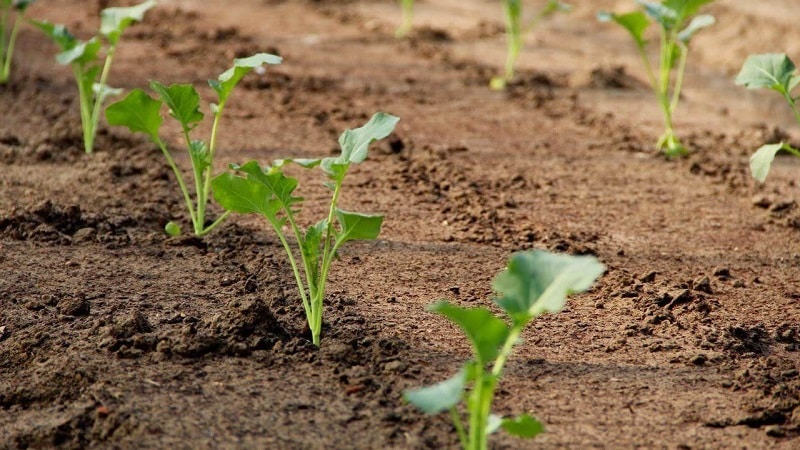
When planting, do not deepen the plants too much., all lower leaves should remain on the surface. Afterwards, the soil around is compacted and watered. In hot sunny weather, the seedlings are shaded for the first two days.
Read also:
Further care
Water 3-5 times per season. If the summer is dry, then more often depending on the condition of the soil and plantings. Water carefully so as not to wash away the soil around the top of the growing root crop. Water consumption under normal conditions is up to 10 liters per 1 sq. m.
Fertilizing with organic fertilizer is carried out two weeks after transplanting into the ground. For example, slurry or mullein solution in a ratio of 1:10.For the second feeding, phosphorus-potassium mixtures are used and done in the second half of summer, during the period of most active growth. If the soils are not depleted, then you do not need to feed rutabaga beyond this, twice a season is enough.
Tillage consists of removing weeds, loosening rows and hilling. Loosen the soil after each watering and do it carefully so as not to damage the roots.
Possible difficulties during cultivation
Rutabaga is an unpretentious vegetable. Even a beginner should not have any difficulties growing it; the main thing is to take preventive measures against diseases and pests in a timely manner.
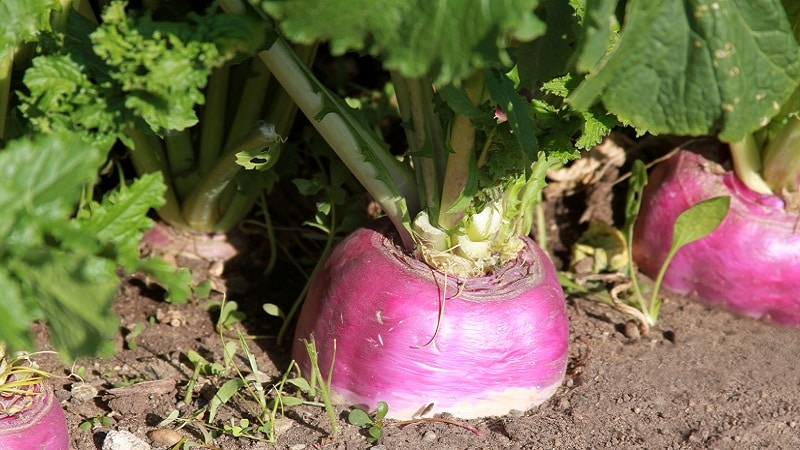
Diseases
Almost all modern varieties are disease resistant. But if you do not follow the rules of crop rotation, do not disinfect the soil and seeds before planting, and do not pull out weeds in the garden, there is a risk of infection. Rutabaga is susceptible to diseases such as clubroot, mosaic, and blackleg.
Clubroot and blackleg appear due to excess moisture; you need to monitor the condition of the soil and not overwater the plantings.
Important! Diseased plants are immediately removed and burned.
Pests
Most often, rutabaga is affected: cabbage fly, aphid, cruciferous flea beetle, moth, slugs. You can prevent the appearance of cruciferous flea beetles by scattering ash between the rows. They get rid of cabbage aphids using a soap-ash solution: 200 g of ash and 50 g of finely grated laundry soap are dissolved in 10 liters of water. Slugs are collected by hand or scattered around the plantings and eggshells between the rows. Insecticides, for example, Inta-VIR, Fitoverm, will help get rid of any pests.
Advice. To repel aphids and cabbage flies, it is recommended to plant marigolds, marigolds and nasturtiums between the rows.
Why doesn't rutabaga set?
There are several reasons why rutabaga does not set a root crop.. Perhaps the place in which she was put is not suitable for her. She does not like acidic, poorly cultivated soils and too much shade. Rutabaga is a light-loving plant; you should not plant it in the shade of large trees and bushes.
If at an early age the plant is exposed to frost and develops for a long time at low (less than +10°C) temperatures, then instead of setting a root crop, the rutabaga will go into flowering.
When does rutabaga ripen?
Four months after planting, the first summer harvest can be harvested for your table. An indicator of maturity will be the brightly colored upper part of the root crop visible above the ground.
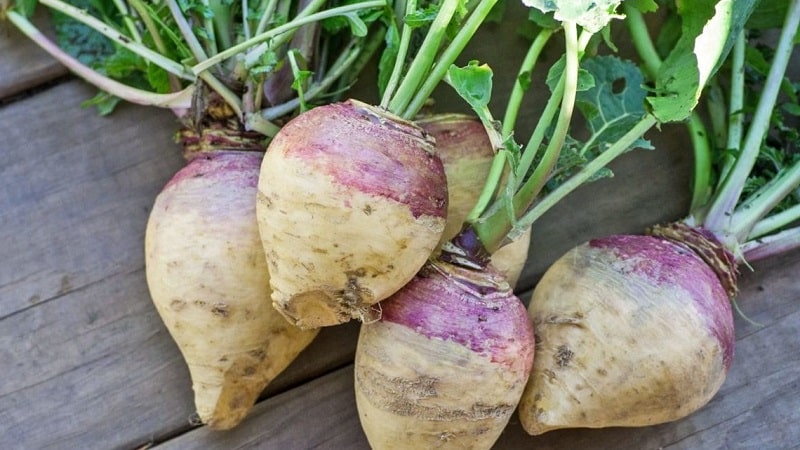
Harvest and storage
For long-term storage, rutabaga is dug up in mid-autumn, in dry weather.. The main thing is to harvest the crop before frost sets in, since frozen root crops will not survive the winter and will rot.
The collected rutabaga is carefully trimmed without leaving petioles., cleared of soil, slightly dried, put in bags or boxes and sent for storage in the cellar. If it is dry and cool enough, the root vegetables do not spoil for a long time, and rutabaga will keep well until next summer. The ideal temperature in the cellar should be no higher than +5°C, and humidity no more than 95%.
Another storage method is freezing.. Vegetables are washed, peeled, cut into pieces, packaged in bags or containers and placed in the freezer.
You can also store rutabaga in the form of preparations.. It is dried, pickled and fermented.
The best varieties of rutabaga
Two types of rutabaga are grown - fodder and table.. Forage varieties are unpretentious and productive, intended for livestock feed.
Table varieties have juicy, tasty root vegetableswhich are used in cooking. Let's look at the best of them.
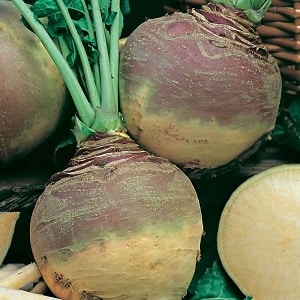 Krasnoselskaya (pictured) is an ancient variety that was grown in the 19th century on peasant farms near St. Petersburg. Rutabaga is of mid-early ripeness, large, sugary, with juicy yellow flesh, wonderful in taste. From the first shoots to harvesting - 90-115 days, the root crop is flat-round, gray-green in color with a purple tint on top, weighing 350-600 g.
Krasnoselskaya (pictured) is an ancient variety that was grown in the 19th century on peasant farms near St. Petersburg. Rutabaga is of mid-early ripeness, large, sugary, with juicy yellow flesh, wonderful in taste. From the first shoots to harvesting - 90-115 days, the root crop is flat-round, gray-green in color with a purple tint on top, weighing 350-600 g.- Novgorodskaya – mid-season variety, reaches ripeness in 120 days. Root vegetables weighing 350-400 g, green on top, yellowish below, the same color as the pulp. Suitable for raw consumption and processing.
- Hera – mid-season variety, from germination to technical ripeness 85-90 days. The round, purple root vegetable with yellow flesh weighs up to 400 g. It has a high content of vitamins and nutrients that are not destroyed even during cooking.
- Vereiskaya – flat-round root crops are small, weighing up to 300 g, ripen in 80-90 days. The color of the peel is deep purple, and the flesh is yellow and tender.
- Child love – a mid-early productive variety, resistant to diseases and different climatic conditions. The root crop is round or oblong, weighing up to 500 g, pale purple in color with juicy creamy-yellow flesh. Suitable for long-term storage and any culinary processing. It has a rich vitamin composition and excellent taste in raw, boiled and stewed form.
- Kohalik blue – large root vegetables, round-flat in shape, with a purple-bronze-colored top, weighing up to 900 g. The pulp is juicy, yellow, without bitterness.
- Brora – late variety. Large, glossy, violet-purple root vegetables with a white tip have increased sugar content. One of the sweetest varieties.
You can choose rutabaga seeds from domestic varieties or from varieties of foreign selection. For example, Ruby, Kaya, and Lizzie have proven themselves well.
Conclusion
Even novice gardeners can grow and care for rutabaga. By following simple instructions, it is not difficult to achieve a consistently high yield. Rutabagas are valuable for their beneficial properties and are well worthy of returning to garden beds.